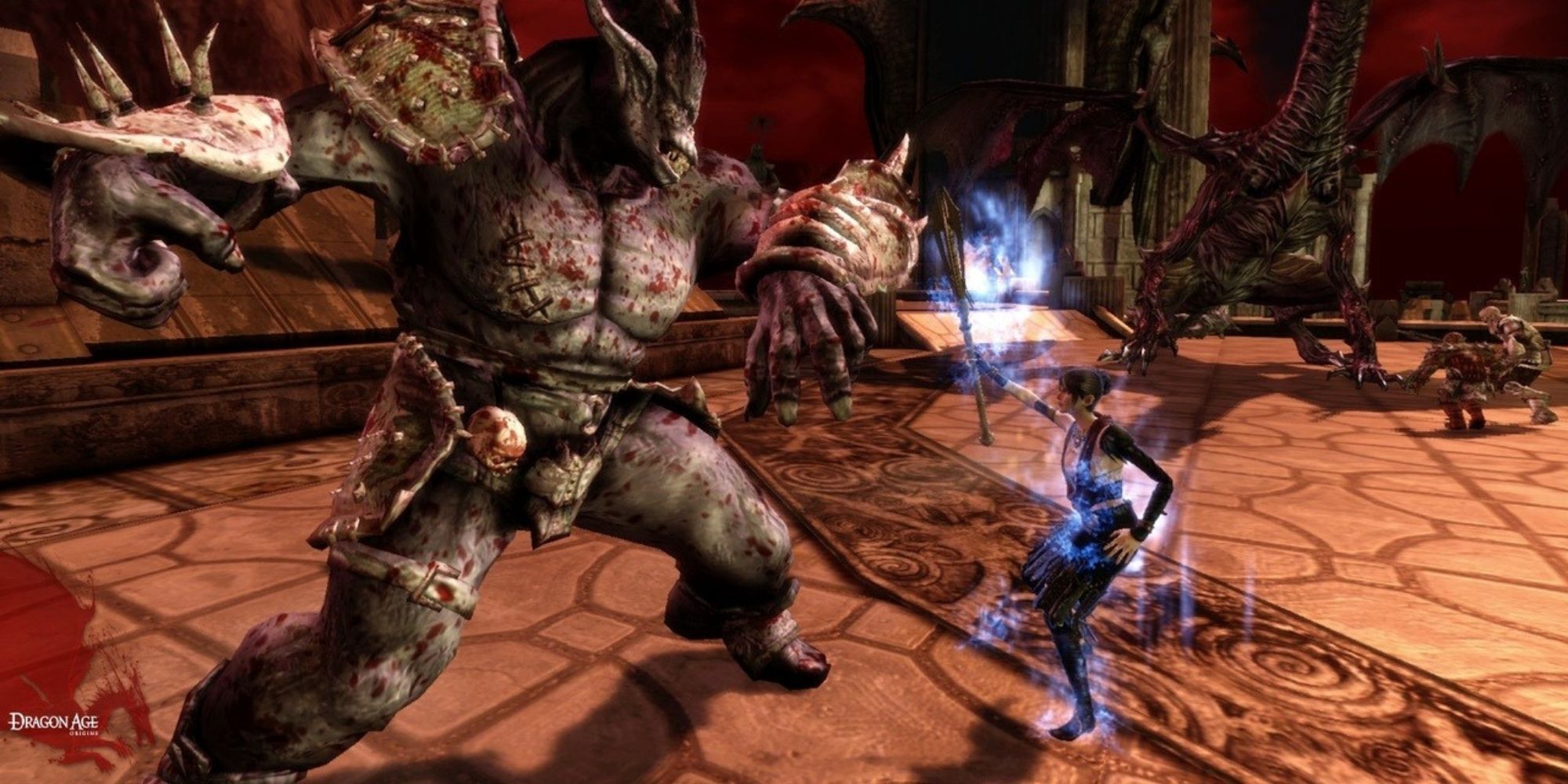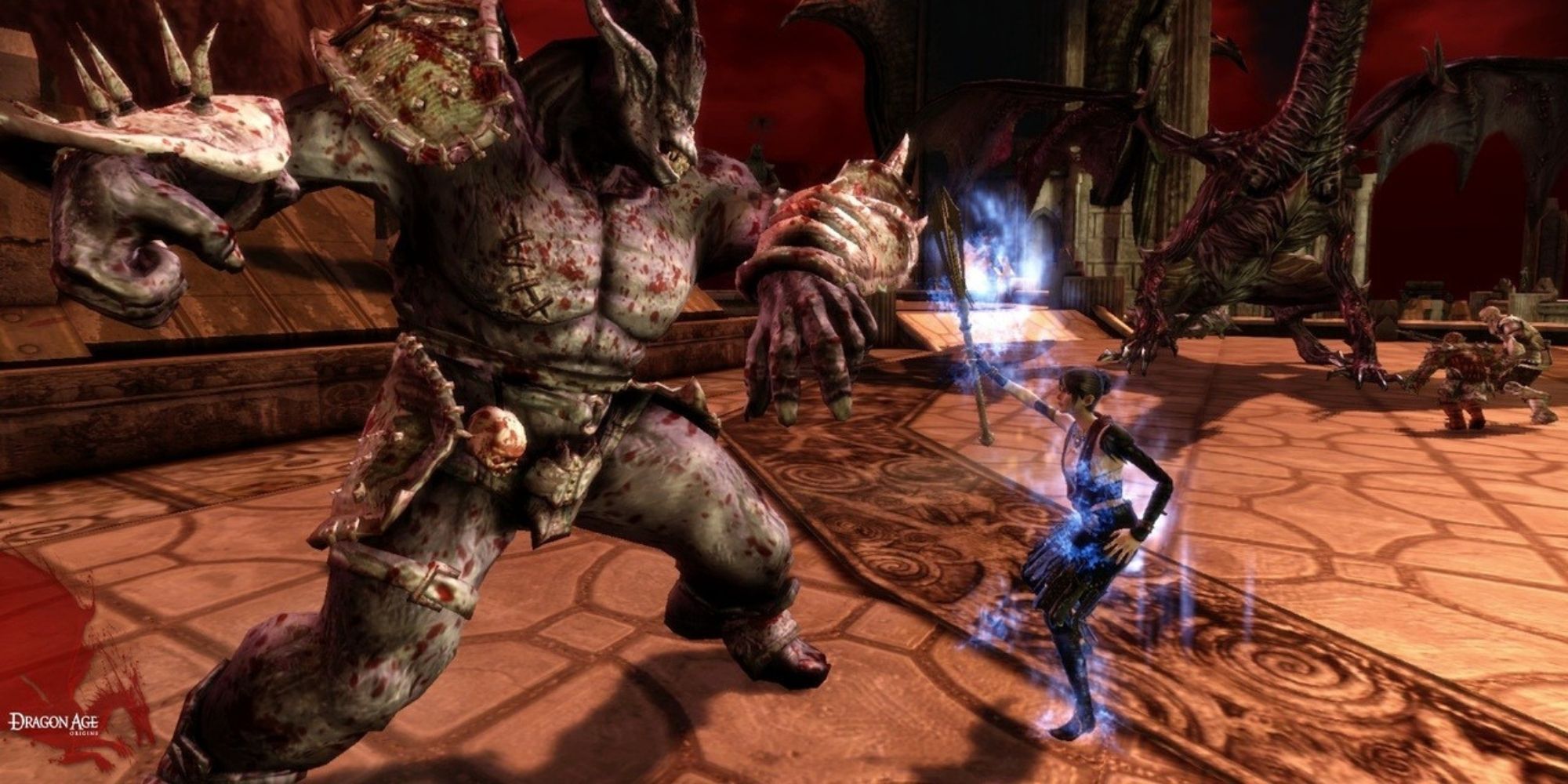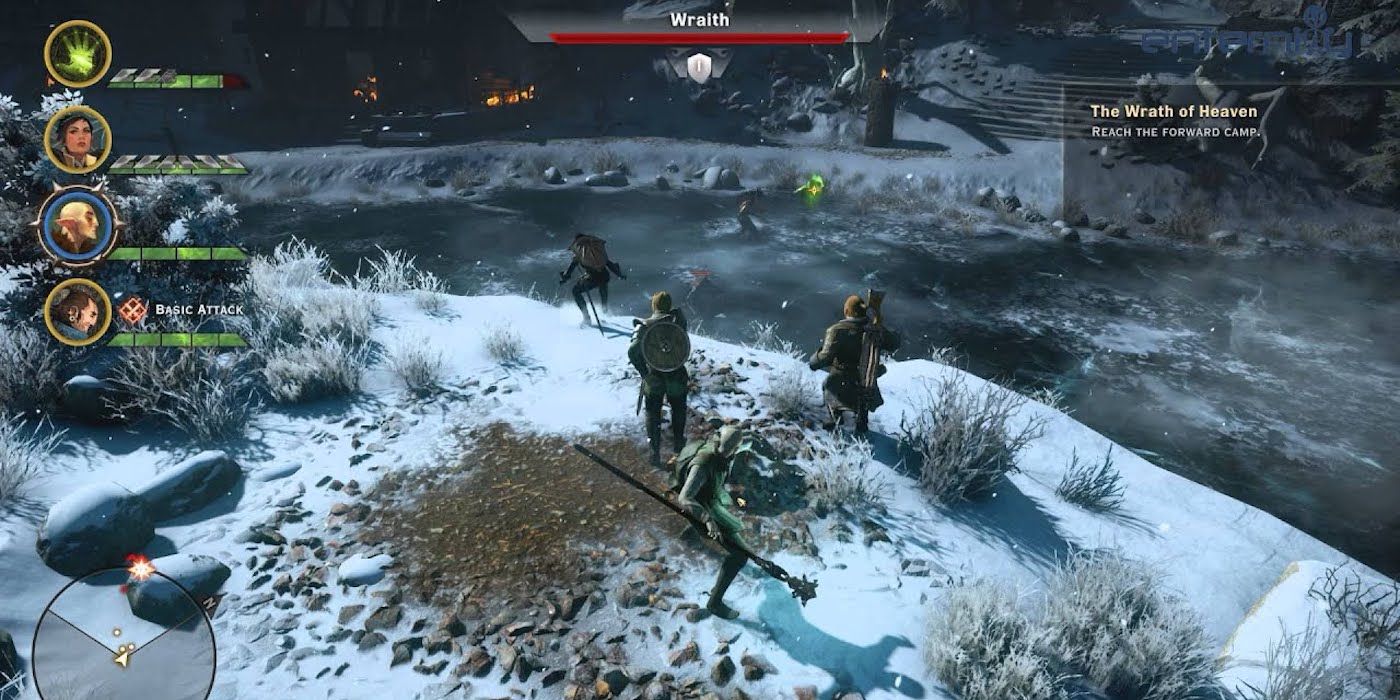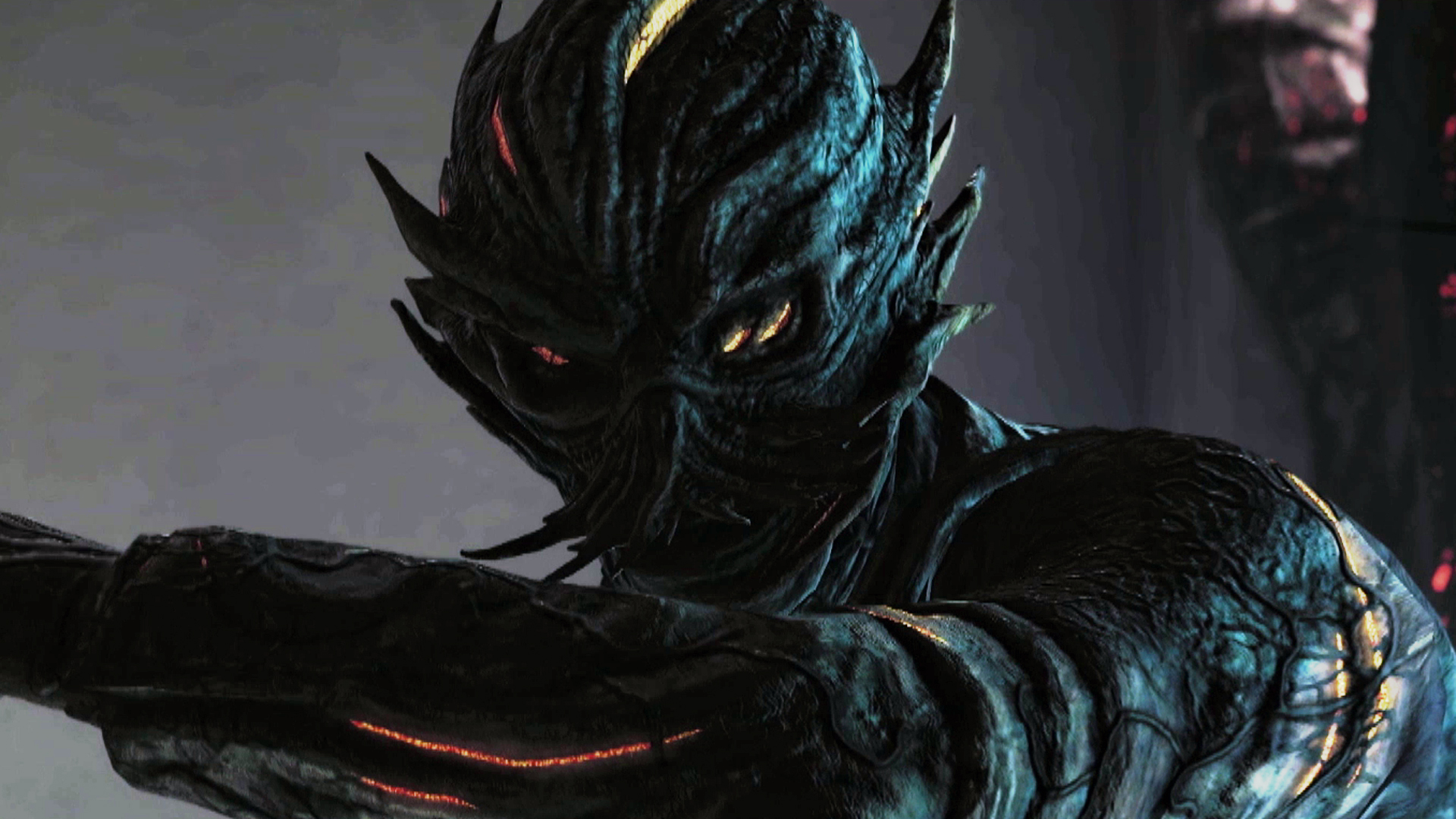
“It looked like a suicide project,” ex-BioWare technical director and producer Pat LaBine tells me. “Porting the biggest game we have ever made to consoles in eight months? Yeah right.”
Considering the seven-year development of Dragon Age: Origins, you’d be forgiven for thinking it was made with a console port in mind. However, as LaBine explains, that was never the intention. After 2007’s Mass Effect dominated the Xbox 360 sales charts, that stance shifted “very late in the development cycle.” LaBine was initially approached with the project on his first day back from Christmas vacation in 2008 – months before the game was supposed to hit stores.
Related: Interview: Jon Curry On Playing Zevran, Playing The Inquisitor, And Never Playing Dragon Age
“Having been [technical director] on the recently cancelled Revolver, there were not many options at the time,” LaBine says. ”Being a shorter term project that I knew was going to ship one way or another had a certain appeal to it.”
And so it did ship, right on schedule, and amazingly fell within just five Metacritic points of the PC version. Not too shabby for just eight months of lead time.
Pat LaBine left BioWare in 2016, having worked on the Dragon Age series from the beginning. After chatting to him about his time at the company, it quickly became apparent just how close potentially millions of Dragon Age fans came to never having the opportunity to play the games, mostly because Origins very nearly never made it to consoles at all, while Inquisition almost left the PS3 and Xbox 360 behind.

“We tried to let the console have its own feel and did not try to emulate the PC [edition] one-to-one”, LaBine says. “Tactical mode was a massive pain in our collective asses: basically, when you zoomed out enough an entire other layer of level content – tops of buildings, etc – was loaded into memory and would crash the game more often than not.
“Everyone around us, from people you would have lunch with to management higher ups, were telling us how screwed we were every day. Doubt, with the ability to measure, is the key to winning in these situations. No sugar coating, no blowing smoke up people’s asses, just the hard brutal truth of the QA reports coming in every morning and saying these 20 levels don’t load and the performance on these levels has degraded over the last two days, and how you and the team deal with it.”
Origins having its port pushed to the last second may not be too surprising considering it was the first game in the series, and was devised when BioWare was much more renowned for its PC pedigree. By the time Dragon Age 2 launched, everything had started to feel a bit more console-friendly thanks to its recycled dungeon designs and single-city setting. As a result of that, you’d probably think the whole process would have been on lock when development started on Inquisition. With the PS4 and Xbox One on the horizon, that wasn’t the case at all. For years, the PS3 and Xbox 360 version was – just like Origins before it – up in the air.

“I tried to kill the legacy platforms [PS3, 360] when I first got on but that failed pretty quickly as there were strong opinions that shipping on five platforms would be better sales wise than shipping on three,” LaBine tells me. The decision for Inquisition to be a multigenerational launch came “unusually late” in the development cycle. “I came on very late in the project, a little less than a year before ship. It was terrifying. The lowest point for me was just barely getting our smallest level to load on a devkit with extended memory.”
The team had to get 14 massive open-world maps working on hardware the game was not made for, which was an astronomical undertaking when you consider it was hard enough to get a bog standard tavern to load.
“At that point you kind of go into a mental fight or flight mode,” LaBine says. “If you decide to fight, you spend a lot of time with the team constantly evaluating which thing is going to kill you today, and then trying to kill said thing as fast as possible so you can get to the next thread.”
Working on such a huge project in such a small amount of time naturally meant LaBine would need a top-tier team, so it should come as no surprise that he’s so quick to praise the work of his crew: “It was mostly the same key players from our outing on Origins, plus the firepower of our new Swedish friends at Dice, plus a talented group of engineers at our Montreal studio,” he explains. “I knew they could pull it off with a little bit of coaching and direction.”

Yet aside from working as part of a similar team, LaBine tells me there weren’t a great deal of other similarities between Origins and Inquisition. “The former was busting an end-of-life engine in any way we could to complete the mission,” he says. “Inquisition was the first game on a new platform and was just as much about learning how to build performant content as it was about getting the tech to bend to our will.”
And so enters the infamous Frostbite engine. Incidentally, LaBine spearheaded the initiative to get BioWare to use this, but that was for a completely different project: Blackfoot. This scrapped multiplayer game eventually became Inquisition, but apparently the original plan was for it to be “like Apocalypse Now meets Left 4 Dead in the Deep Roads.”
After Blackfoot was canned, LaBine took a break from Dragon Age. “I did not really want to sign up for three more years bending Frostbite to our will,” he explains. “Animation? Oh, Frostbite only does humans. What about other types of humanoids? Four-legged animals? Spiders? Dragons!? Forget about it.”
Despite everything working against them – the lack of time, the sheer scale of the game, the unfriendly nature of the Frostbite engine and the PS3 – Inquisition shipped on time and the port met its deadlines. “One day in late August, I came in and QA gave our first full green report,” LaBine says. “We had broken the back of the platforms and I knew we were going to ship on time and quality.”

Talking to LaBine, it’s clear just how stressful and impossible the situation felt. He paints a vivid picture of the BioWare office in 2014. “It was like a mini version of Apollo 13 every time we went out,” he says. “At the end of the day, I’m most proud of the teams we were able to put together to accomplish these ‘impossible’ missions.’
“I feel grateful that the studio trusted me to get the job done… because I’m more of a Frodo-style leader in a field that demands a Gandalf or Strider for every project.”
In spite of everything – all the deadlines and the crashes – LaBine still remembers the experience fondly. “Everyone showed up every day, worked the problems, and brought something special to the table,” he tells me. “No egos and humble AF, but determined to bend space and time if needed to ship the game.”
Next: Interview: Mark Darrah On The Ever-Changing Nature Of Dragon Age



